Free Streaming is Different, Better, Cheaper than People Think

Ya know, the SIP house arrest thing got real old, real fast.
As with most people in Silicon Valley, we’re used to working from home, in a hotel room, on holiday; heck, even at the office – anywhere, any time.
With a computer, smartphone and a good internet connection, BAM! we’re in business.
But … being trapped in the house with the whole family 24×7 is … different.
Fortunately, there’s an escape with video content.
We hesitate to call all of it entertainment because well, we’re snobbish and think the stuff the kids watch – Instagram, TikTok, half-plus of YouTube, most of Facebook, Twitch, Twitter, etc., etc. – is transient … at best.
But it’s their go-to fave so, who are we to say it won’t be the entertainment of tomorrow?
Still, our tastes lean to professionally created content that we pay for one way or the other – ad-supported AVOD or subscription SVOD.
We aren’t alone. Nearly everyone in our cul-de-sac joined the 5.9M pay-tv folks – according to Leichtman Research Group (LRG), which fired its cable company last year and went OTT.
LRG feels as though it really showed the cable guy, but most don’t realize that people like Comcast and Charter made up for it on the flip side with an increase of more than 3.1M broadband customers.
Yeah, a lot more profitable and less messy.
But it’s proving to be a mixed bag for consumers.
Yes, the first choice for most cable cutters is to jump on the service that is synonymous with streaming – Netflix.

But after you’re through watching one of the most hyped shows around, Tiger King (great PR job!), and their other movies and series, it’s time to broaden your horizons.
Fortunately for viewers everywhere (Netflix is available in 190 countries), studios and content owners around the globe thought they had a great idea.
Since the U.S. is the largest consumer of video content (China is second), it’s no wonder that there are more than 300 general and niche OTT services available.
When someone sees a good thing, everyone is sure they’ll capture their share of the 329.45M people in the U.S. who, from the streamers’ perspective, are prime customers.
Sure, the U.S. VOD services would also like to offer their content to the 1.4B-plus mainland China population but the viewing options are “limited” there.
However, the rest of the 7.8B global population is available as long as you meet individual country requirements. (Usually, 30 percent of content shown in each country is produced there.)

The potential is just too good to pass up, which is why there are well over 1,000 other streaming services.
And there are plenty of content viewing targets around the globe:
- 79 percent of the 1.4B households have TV sets
- 2B computers, some used for business
- 2+ B tablets
- 5B smartphones
All of those screens were put to good use during the rolling global lockdown when people decided to take a break from playing video games (Newzoo estimates there are 2.5B gamers worldwide but there are a lot of closet gamers out there).
When the pandemic was at its peak, streaming went through the roof to any, all screens.
To “help you through the pandemic,” all of the majors – Netflix, Apple TV +, Amazon Prime Video, Hulu, HBO Now and YouTube TV as well as newcomers like Peacock, Quibi, CBS All Access, AT&T WatchTV and others – were offering extended free trials and major discounts.
With all the great entertainment opportunities/values and so many people with time on their hands, streaming put such a strain on the Internet that the EU asked Netflix and YouTube reduce their streaming quality.
It wasn’t a problem for Netflix because it was streaming back when the Internet was really anemic.
Because Netflix entertainment accounts for 15 percent of the worldwide downstream traffic, it had refined adaptive streaming tools that automatically adjust the quality of streaming video based on accessible bandwidth.
Netflix said sure, because different ISPs built their networks differently.
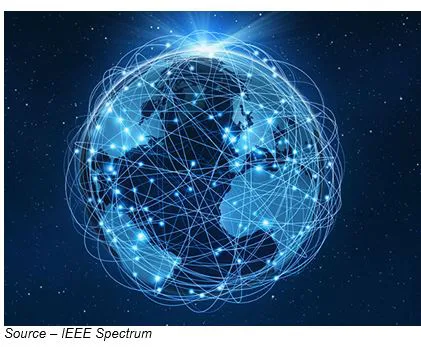
While no one could foresee a pandemic sweeping the globe, the internet was ready.
Even when 90 percent of the Internet (wired/wireless) traffic was video, the service bent but didn’t break.
With all the great movie and series content available at a click, folks added new sources at a record rate with households streaming an average of eight hours a day.
It’s great, but finding something they really want to watch is a bear.
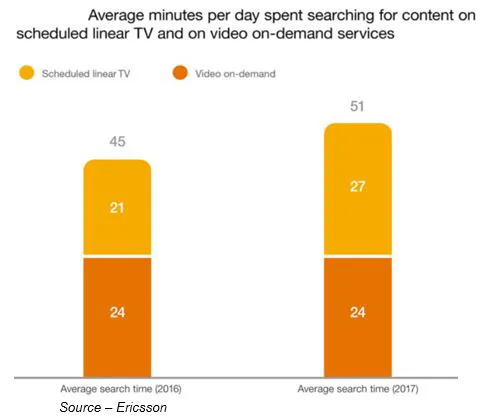
Moving from service to service and scanning the offerings is a lot of work.
Despite having a couple of smart OLED big screens, we still access our content using a Roku device and the computers/smartphones use the service’s app.
It puts our four subscription and two free “channels” in one location next to the free/transaction content.
While we enjoy content available on Netflix, Disney +, Apple TV+ and Amazon Prime; our new favorite is Tubi’s free stuff.
Why bother with an ad-supported service?
- It helps us limit our entertainment expenses
- If we haven’t seen the content, then it’s new as far as we’re concerned
- It may be ad-supported but it’s a well-kept secret and the ads aren’t as obtrusive as the old Pay-TV stuff
Actually, AVOD is a good deal for everyone.
Comcast acquired Xumo, which included 190 channels and 5M+ users for about $100M; Fox picked up Tubi’s 25M viewers and a large library of movies/shows for $440M; Viacom dropped $340M for Pluto’s 100+ channels and 5,000+ shows/movies.
Check what Netflix, Disney and Apple (just a few examples) have invested on new content. The purchases are a bargain!
And the ad-supported model is one Comcast, Viacom and Fox know very well … believe it!
What people who watch the streaming content as well as most marketers/advertisers don’t understand yet is that streaming is completely different from the old-fashioned pay-TV stuff.
There aren’t eight-minute bundles of constantly repeated 30-60 second ads every hour. Instead, there are usually a maximum of three minutes of ads and they’re short.
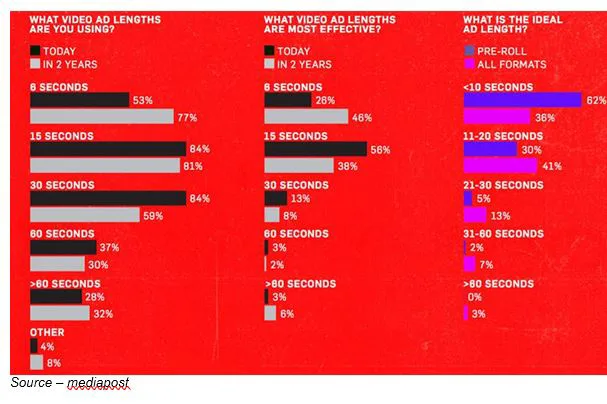
There’s a reason people called TV an idiot box because all the ad sales folks knew about you was that you paid your cable bill on time and that you were tuned in to a show at a specific time.
So, you were a good target.
But today, because your OTT content is IP based, the service knows more about you, your entertainment likes/dislikes, the location of the screen being used and more.
As a result, they are able to deliver ad content the individual is interested in rather than two “if you’ve been in an accident” ads back-to-back … or something equally grating.
But people like the idea that they can now get their entertainment when and where they want, and it’s appealing … real appealing.
They liked it for Netflix … they liked it for Disney+… they liked it for Amazon Prime … they liked it for Apple TV+… they liked it for …
But after a while, BAM! they were right back up there – and beyond – with their cable bill that they wanted to reduce/eliminate–despite what Jeff Stankey, WarnerMedia CEO, said about his service, “People don’t mind paying more for our rich content than other options out there.”
Jeezz Jeff, people are overwhelmed with great content and there’s a point where people repeat Howard Beale’s rant from the film Network, “I’m as mad as hell, and I’m not going to take this anymore.”
Okay, probably not; but people have enough insanely great options that they’re paying good money for and a lot are going to simply say, “No thanks.” Especially when the free content is just as great and comes with so few – at least for now – ads that you hardly notice.

AVOD offers an easy, zero-cost alternative to consumers with a much lower ad-load than traditional linear TV.
As Ampere’s Toby Holleran pointed out, operators like those who recently acquired Tubi, Xumo, Pluto and others can build a large online audience around a library of new, friendly and familiar content.
With the right selection criteria in mind, these can be the people advertisers want to connect/engage with today.

After all, a five-second ad like this is hardly abrasive.
Properly placed, it’s almost a pleasant break—or, at least in this case, a reminder you want a snack.
Four or five of these in an hour shouldn’t be bad, should they?
People hardly notice them except subconsciously which, incidentally, happens to be ultra-effective, according to most studies.
YouGov found that people are more apt to consider the “free” viewing option – adults 25-34, 52 percent; 18-24-year-olds, 44 percent; and 35-44-year-olds, 48 percent – a smart viewing investment.
It’s pretty easy to understand that the younger, tech-savvy viewers are at the beginning of their careers and have a long spending life in front of them.
So, what’s holding companies back?
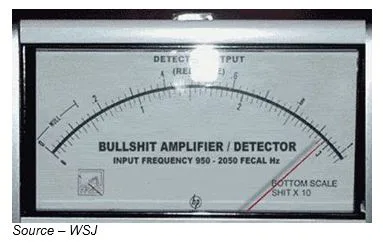
Oh yeah, I forgot:
- Your product/service message is too big, important, complex to tell in 3-10 seconds
- Small audience – only 3-5M rather than the 40-50M you expect to reach with pay-tv, so the CPM is too high
Seriously?
Yes, the current investment in online streaming advertising is much smaller than the $70B advertisers throw at pay-tv ads.
However, the day/time entertainment channels’ demographics tend to be the older crowd.
Not that they should be ignored (we fall into that category); however, are they really your prime prospects?
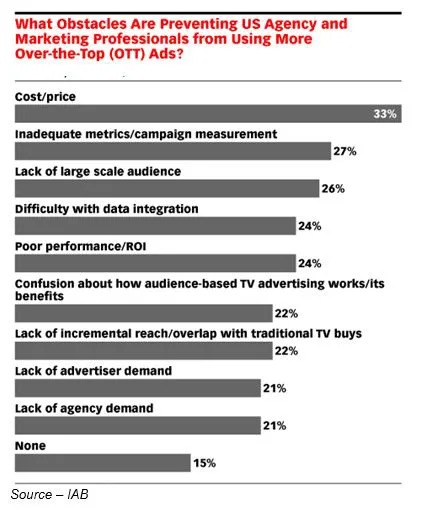
The real reasons companies tend to shy away from or overlook ad-supported streaming (we have no skin in this game) are:
- It’s new, different and who wants to be the first to try something new, different?
- A company’s marketing and advertising team needs to have a strong understanding of their primary and secondary customers, their wants/needs.
- It’s easier to tell your story in several minutes rather than several seconds because somewhere in that pitch something will/may appeal to someone.
- The ads don’t have the same prestige as being on “national TV.”
- No one has told them to focus on where the customer is going to be rather than follow her/him.
Taken as a composite picture — the cheap maintenance costs, lower content spends and growing interest from both viewers and consequently, advertisers — it’s easy to see that AVOD services were smart investments for Comcast, Fox, Viacom and others interested in long-term revenue streams. Especially as people want to/need to manage their personal/home entertainment budgets.
According to Magna Global, streaming ad revenue was $3.8B last year, far short of the $70B advertisers spent on appointment TV ads last year.
The streaming ad investment was an increase of 39 percent over 2018.
Magna Global also estimates that investment will increase to $5B next year.
Ultimately, the industry and the world are going to emerge from the current shut down better, stronger and different.
 There’s really nothing company management and marketing can do to accelerate the emergence, but they can develop plans and programs that help them prepare for tomorrow.
There’s really nothing company management and marketing can do to accelerate the emergence, but they can develop plans and programs that help them prepare for tomorrow.
Those who have plans and programs in place will recognize tomorrow when it arrives and will be as confident as Nolan was in Hours when he said, “I know you.”
It’s worth the extra effort.
# # #
Andy Marken – [email protected] – is an author of more than 700 articles on management, marketing, communications, industry trends in media & entertainment, consumer electronics, software and applications. He is an internationally recognized marketing/communications consultant with a broad range of technical and industry expertise especially in storage, storage management and film/video production fields. This has led to the development of an extended range of relationships with consumer, business, industry trade press, online media and industry analysts/consultants.